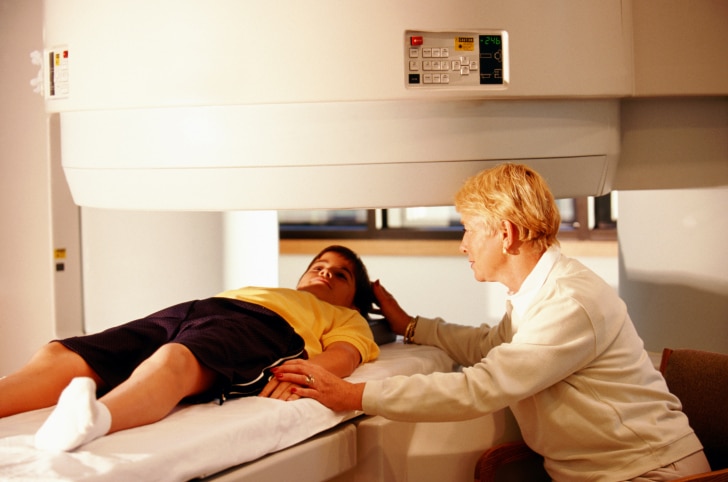Brain scans performed on young children could predict their reading ability in later life.
Performing brain scans on young children could detect signs of early reading difficulties, such as dyslexia, new research has suggested.
Dyslexia is one of the most common learning difficulties, whereby the affected individual typically experiences problems with factors like verbal memory, the speed of verbal processing and phonological awareness. According to the NHS, an estimated one in every ten people in the UK has dyslexia to some degree.

Diagnosing the condition in young children can be tricky, as the signs are not always clear. But research has shown that the earlier it is identified, the sooner appropriate interventions for treatment can be put in place – subsequently helping the child to improve their reading and writing at the earliest stage possible.
The latest study of dyslexia comes from researchers at the University of California, San Francisco (UCSF). They set out to investigate whether the white matter in children’s brains – which is crucial in helping us to think, learn and perceive – could predict their reading abilities in later childhood.
In order to examine this section in detail, the scientists conducted brain scans on 38 nursery school pupils and monitored the development of their white matter until they reached the third year of primary school.
The study found that the development of the children’s white matter was a significant indicator of their reading abilities. In particular, differences in areas of left dorsal white matter – associated with phonological processes – predicted 56 per cent of the variance in reading outcomes. The ability to process words phonologically is a key requirement of reading and detecting problems at an early stage serves as a biomarker for reading difficulties.
Dr Fumiko Hoeft, lead researcher at the university, said: “Early identification and interventions are extremely important in children with dyslexia as well as most neurodevelopmental disorders.
“Accumulation of research evidence such as ours may one day help us identify kids who might be at risk for dyslexia, rather than waiting for children to become poor readers and experience failure.”
Other common ways to assess a child’s reading abilities include looking at IQ levels, socioeconomic factors, early language skills and a family history of reading difficulties. However, the recent study revealed that performing brain scans improved the accuracy of reading ability predictions by 60 per cent.
Dr Hoeft added that by examining white brain matter at a critical milestone in a child’s life – when they begin school and learn how to read – contributed towards the effectiveness of predicting their reading ability.
Following the study, Chelsea Myers – lab manager in UCSF’s Laboratory for Educational Neuroscience – said it is hoped that the findings will raise awareness and understanding of children’s neurocognitive profiles among teachers, parents and carers, so they can provide the appropriate treatment and facilities – especially for children with dyslexia.
One effective treatment is the use of assistive technologies. These are digital software tools that can be executed in the classroom or at home and are an interactive way of teaching children with learning difficulties. Through a series of fun-filled, educational games and activities, the child can work through each one at their own pace, all the while enhancing their literacy and numeracy skills.
For example, the Lucid Comprehension Booster programme allows children to work with texts that vary in content and complexity, helping to improve their level of reading and comprehension. It also has a function to specially tailor the tasks to the child’s individual rate of learning and requires minimal supervision.
(Credit image: Thinkstock/iStock)
